How to Grow and Care for Mushrooms: Explode Your Yields with Expert Techniques
- May 24, 2024
- 2 comment
Learn how to grow and care for mushrooms with proven methods for abundant yields. Get expert tips to start your successful mushroom garden today. Dive into the world of mushroom cultivation with this essential guide. Whether you are starting out or looking to refine your skills, you’ll find comprehensive strategies to grow and care for mushrooms effectively.

This article covers everything from choosing the right spores to creating the ideal growing conditions. Follow these expert tips and turn your culinary garden into a thriving hub of delicious mushrooms. Get ready to elevate your homegrown flavors!
Table of Contents
- Understanding Mushroom Biology
- Setting Up Your Growing Area
- Planting and Cultivation Techniques
- Harvesting and Maintenance
- Grow and Care for Mushrooms at Home: Practical Tips
- Nutritional Benefits and Uses of Home-Grown Mushrooms
- Conclusion
- FAQs
Understanding Mushroom Biology
Basics of Mushroom Biology
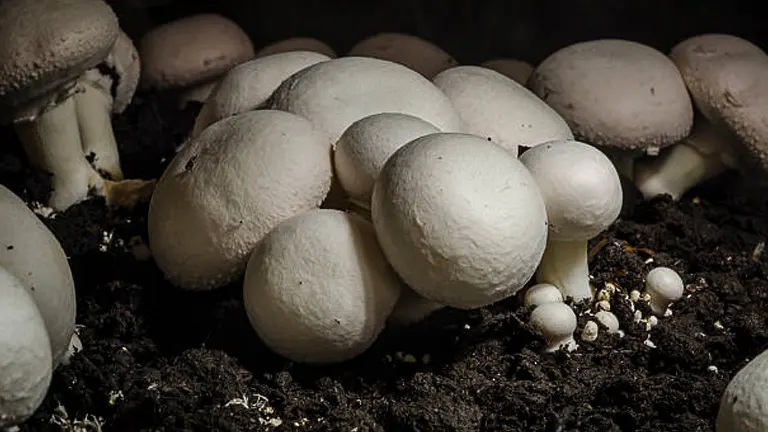
Mushrooms, part of the fungi kingdom, exhibit unique biological characteristics that set them apart from plants. Unlike plants, mushrooms do not rely on photosynthesis; instead, they are saprophytic, decomposing organic matter to absorb nutrients. This process begins with the germination of spores, which are analogous to seeds in plants but are much smaller and simpler structurally.
Upon germination, spores give rise to a network of fine, thread-like structures called hyphae. When hyphae from different spores meet and fuse, they form a mycelium, which serves as the main growth structure of the fungus. This mycelial network spreads extensively beneath the surface to access water and nutrients. It is capable of breaking down complex organic compounds in the substrate, transforming them into simpler forms that the mushroom can absorb.
Types of Mushrooms and Their Specific Needs
The growth requirements of mushrooms vary significantly among species, influenced by their native habitats and evolutionary adaptations:
- Button Mushrooms (Agaricus bisporus): Prefer cooler temperatures between 55-60°F (13-16°C). These mushrooms thrive in dark conditions and require a substrate rich in organic matter, such as composted manure mixed with straw.
- Oyster Mushrooms (Pleurotus ostreatus): Adaptable to a range of temperatures, but optimal growth occurs between 60-75°F (16-24°C). High humidity levels (80-90%) are crucial, and they can grow on various substrates including straw, coffee grounds, and hardwood sawdust.
- Shiitake Mushrooms (Lentinula edodes): Prefer wood-based substrates and grow best at temperatures between 55-75°F (13-24°C) with moderate humidity. They mimic their natural growth on fallen hardwood trees, making logs or sawdust ideal substrates.
Each type of mushroom has adapted to specific environmental conditions that optimize their growth and fruiting. Understanding these needs is crucial for successful cultivation.
Optimal Growth Conditions for Popular Mushroom Varieties
| Mushroom Type | Preferred Temperature | Optimal Humidity | Ideal Substrate |
|---|---|---|---|
| Button Mushrooms | 55-60°F (13-16°C) | 80-90% | Composted manure and straw |
| Oyster Mushrooms | 60-75°F (16-24°C) | 80-90% | Straw, coffee grounds |
| Shiitake Mushrooms | 55-75°F (13-24°C) | 75-85% | Hardwood logs, sawdust |
This enhanced section provides a clearer, more scientific insight into mushroom biology and the specific environmental conditions required for the growth of different mushroom types, aimed at catering to readers with a keen interest in the scientific aspects of mushroom cultivation.
Setting Up Your Growing Area
Choosing the Right Location
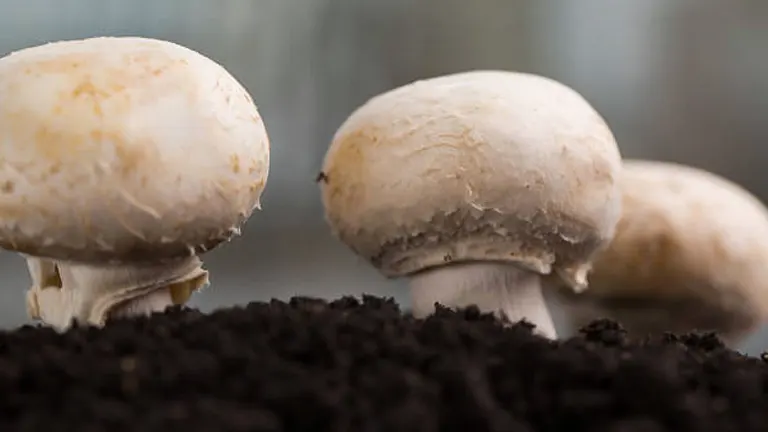
The environment is critical in mushroom cultivation, as it directly affects the growth rate and health of the mushrooms. Here’s an enhanced look at how to select the best location:
- Indoor Cultivation: Basements, closets, or spare rooms offer controlled environments that are essential for varieties such as button mushrooms. These areas can be easily modified to maintain the dark and cool conditions these mushrooms prefer. Ensure that the space has adequate ventilation to prevent the buildup of humidity to harmful levels.
- Outdoor Cultivation: For those preferring the natural route, mushrooms like oyster mushrooms are quite adaptable. A shaded spot in your garden, beneath a deck, or in any similarly sheltered location that mimics the mushrooms’ natural environment works well. These spots should protect the mushrooms from direct sunlight while still providing fresh air and maintaining humidity.
Preparing Growth Substrates
Substrates serve as the nutritional foundation for mushroom growth. The choice of substrate varies depending on the mushroom species:
- Sawdust: Predominantly used for cultivating shiitake mushrooms, the sawdust should ideally come from hardwood. It requires pasteurization to eliminate competing microorganisms. The specific composition of the sawdust, including its wood type and particle size, can significantly influence the growth speed and yield.
- Straw: This substrate is most suitable for oyster mushrooms. It must be chopped to increase the surface area for mycelial colonization, soaked to hydrate, and pasteurized to reduce contaminants.
- Coffee Grounds: A sustainable choice for urban cultivators, coffee grounds are rich in nitrogen, which supports robust mushroom growth. They are especially good for growing oyster mushrooms in small, controlled environments.
Sterilizing Substrates: This critical step ensures the substrate is free from harmful pathogens that could inhibit mushroom growth or lead to crop failure. Here’s a more detailed guide to substrate sterilization:
- Pasteurization Technique: Substrates should be soaked in water heated to 160-180°F (71-82°C) for 1-2 hours. This process kills most bacteria and fungi without depleting the nutrients essential for mushroom growth.
Substrate Requirements and Sterilization Methods for Common Mushroom Types
| Mushroom Type | Ideal Substrate | Pasteurization Temperature | Time |
|---|---|---|---|
| Button Mushrooms | Composted manure | 160°F (71°C) | 1 hour |
| Oyster Mushrooms | Straw, coffee grounds | 170°F (77°C) | 1-2 hours |
| Shiitake Mushrooms | Hardwood sawdust | 180°F (82°C) | 2 hours |
Planting and Cultivation Techniques
Inoculation of Substrates
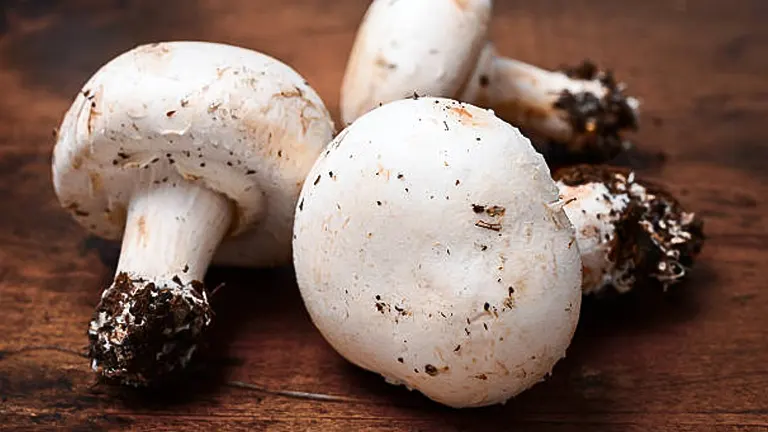
After the substrate is prepared and sterilized, it’s ready for the crucial step of inoculation. This is where the prepared mushroom spawn is introduced to begin the cultivation process.
- Preparing Spawn: Mushroom spawn, which consists of mycelium grown on a nutrient-rich medium like grain, is the starting point for mushroom cultivation. This living fungal culture is what colonizes the substrate and ultimately produces mushrooms. It’s important to source high-quality spawn from reputable suppliers to ensure robust growth.
- Inoculation Process: To inoculate the substrate, evenly distribute the spawn across the surface of the cooled, sterilized substrate. It’s vital to ensure that the spawn is mixed thoroughly but gently into the substrate to prevent damage to the mycelium. For larger production scales, a layered approach can be used, alternating between layers of substrate and spawn to promote even colonization.
- Incubation: The inoculated substrate should then be placed in a controlled environment where it can be kept dark and at a constant humidity. This stage, crucial for the mycelium to establish itself within the substrate, typically takes 2-4 weeks. The exact duration depends on the type of mushroom and the conditions maintained.
Environmental Conditions for Optimal Growth
Creating the right environment is essential for mushroom cultivation. Each type of mushroom has specific needs regarding temperature, humidity, and light:
- Temperature: Different mushrooms have different temperature needs. For instance, button mushrooms thrive in cooler temperatures ranging from 55-60°F (13-16°C), while oyster mushrooms can handle up to 70°F (21°C).
- Humidity: Maintaining a high humidity level, typically between 80-90%, is critical for mushroom growth. This can be achieved using methods like misting the air around the mushrooms or employing a humidity tent.
- Light: Mushrooms require minimal light, which contrasts with the needs of photosynthetic plants. A few hours of indirect light per day is sufficient to encourage the growth of fruiting bodies without risking the drying out of the substrate.
Environmental Requirements for Key Mushroom Varieties
| Mushroom Type | Optimal Temperature Range | Ideal Humidity Level | Light Requirements | Incubation Time |
|---|---|---|---|---|
| Button Mushrooms | 55-60°F (13-16°C) | 85-90% | Indirect, minimal | 3-4 weeks |
| Oyster Mushrooms | 60-70°F (16-21°C) | 80-90% | Low to none | 2-3 weeks |
| Shiitake Mushrooms | 55-75°F (13-24°C) | 75-85% | Moderate, indirect | 4-6 weeks |
Harvesting and Maintenance
When and How to Harvest Mushrooms
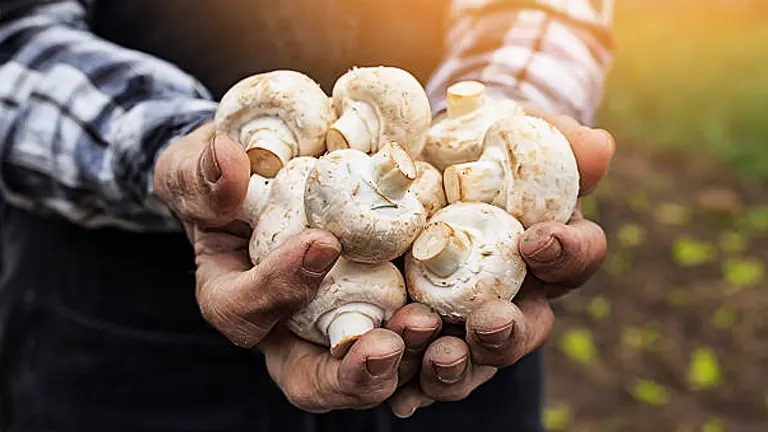
Harvesting mushrooms at the right time is crucial for quality and yield. Here’s how to identify the perfect moment and technique:
- Signs of Readiness: The optimal time to harvest mushrooms is species-dependent. Generally, mushrooms should be harvested just as the underside of the caps begins to uncurl from the stems. This indicates peak flavor and texture. For example, button mushrooms are best harvested when the veil between the cap and stem just starts to tear.
- Harvesting Technique: Use a gentle twist-and-pull motion to detach mushrooms from the substrate. This method minimizes damage to the mycelium, preserving it for future growth cycles. For larger species, like portobello, a sharp knife may be needed to cut the stem cleanly without disturbing the mycelium.
Proper technique ensures maximum yield and helps maintain the integrity of the mycelium for subsequent fruiting.
Post-Harvest Care and Troubleshooting
Effective post-harvest care extends the life of your mushrooms and prepares your setup for the next cycle:
- Storage: Store freshly harvested mushrooms in a breathable container in the refrigerator to maintain freshness for up to a week. For extended storage, techniques like drying or pickling can be employed. The optimal storage temperature for most mushrooms is around 34-38°F (1-3°C).
- Monitoring for Pests and Diseases: Inspect the cultivation area and remaining mushrooms regularly for signs of pests or diseases. Early detection is key to preventing widespread issues. Implement control measures promptly if any signs of infestation or infection are observed.
- Continued Care for the Substrate: Post-harvest, the substrate may still be viable for additional fruiting cycles if it’s not exhausted. Assess the moisture content and structural integrity of the substrate. Supplement with additional nutrients if needed to support further growth.
Post-Harvest Care Guidelines for Common Mushroom Varieties
| Mushroom Type | Storage Temperature | Storage Techniques | Signs of Pest/Disease |
|---|---|---|---|
| Button Mushrooms | 34-38°F (1-3°C) | Refrigerate, Dry, Pickle | Mold, mites |
| Oyster Mushrooms | 34-38°F (1-3°C) | Refrigerate, Dry | Slimy texture, spots |
| Shiitake Mushrooms | 34-38°F (1-3°C) | Refrigerate, Dry | Discoloration, decay |
Grow and Care for Mushrooms at Home: Practical Tips

Cultivating mushrooms at home can be a highly rewarding experience, providing both culinary delights and a fascinating glimpse into fungal biology. Here’s how to optimize your indoor growing setup:
Selecting the Right Space
Choose a location that can be easily controlled for light and temperature. Ideal spaces include spare rooms, basements, or closets. These areas offer the advantage of being able to maintain the dark and cool conditions that most mushrooms prefer. Ensure the space has good ventilation to prevent the buildup of excessive humidity, which can lead to mold growth.
Setting Up Your Growing Containers
Containers are a crucial component of your indoor mushroom farm. Options include:
- Buckets: Plastic buckets with drilled holes for air exchange.
- Jars: Glass jars for smaller-scale operations or experimental batches.
- Bags: Specially designed mushroom grow bags that allow for proper air circulation and moisture retention.
Ensure all containers are sterilized before use to prevent contamination.
Controlling Environmental Factors
Maintaining the right environmental conditions is essential for successful mushroom growth:
- Humidity: Use a small humidifier to keep humidity levels between 80-90%. Consistent humidity is crucial for the development of fruiting bodies.
- Temperature: A space heater or fan can help regulate temperature. Most mushrooms prefer temperatures between 55-70°F (13-21°C), depending on the species.
- Monitoring Tools: Employ a thermometer and hygrometer to monitor temperature and humidity levels accurately. This allows for quick adjustments to ensure optimal growing conditions.
Scaling the Operation
Start small to understand the nuances of mushroom cultivation. Begin with one or two containers and gradually increase as you gain experience:
- Variety Experimentation: Try different mushroom varieties to see which ones thrive best in your specific environment.
- Production Expansion: Once confident, expand your operation by adding more containers or upgrading to larger ones. Consider setting up shelving units to maximize vertical space.
Key Parameters for Indoor Mushroom Cultivation
| Parameter | Optimal Range | Tools Needed |
|---|---|---|
| Humidity | 80-90% | Humidifier, Hygrometer |
| Temperature | 55-70°F (13-21°C) | Space Heater, Thermometer |
| Light | Low, indirect light (few hours/day) | LED Grow Light (optional) |
| Ventilation | Good air circulation | Fan, Ventilation System |
Nutritional Benefits and Uses of Home-Grown Mushrooms
Growing mushrooms at home not only provides a fascinating hobby but also yields a versatile and nutritious ingredient. Mushrooms are celebrated for their substantial health benefits and diverse culinary applications.
Health Benefits
Mushrooms are an exceptional food when it comes to nutrition. Low in calories yet rich in essential nutrients, they make a superb addition to a healthy diet:
- Protein: Mushrooms are one of the few non-animal sources of high-quality protein, making them an excellent choice for vegetarians and vegans.
- Vitamins: They are a good source of B vitamins, which help the body to convert food into fuel, thereby aiding in energy metabolism. Mushrooms are also one of the few dietary sources of vitamin D, particularly when exposed to sunlight, which enhances their vitamin D content.
- Minerals: Rich in minerals such as selenium, which plays a key role in maintaining immune function, and potassium, crucial for heart, muscle, and nerve function. Iron is also present, which is vital for blood production.
Culinary Uses
Mushrooms’ unique umami flavor and meaty texture make them a fantastic ingredient in a variety of dishes:
- Versatility: You can use mushrooms in a myriad of culinary preparations. Add them to pizzas, incorporate them into pasta sauces, or use them as a primary ingredient in risottos and stews.
- Cooking Techniques: Mushrooms can be sautéed, grilled, roasted, or even eaten raw in salads. Each method brings out different aspects of their flavor and texture.
- Flavor Pairings: Their earthy taste complements a wide range of ingredients including garlic, thyme, soy sauce, and cheeses like Parmesan and Gouda.
Recipes and Tips
- Mushroom Stir-Fry: Quick and easy, stir-frying mushrooms with vegetables like bell peppers and snap peas in a bit of soy sauce and ginger can create a flavorful and healthy meal in minutes.
- Creamy Mushroom Soup: Blend sautéed mushrooms with broth, a dash of cream, and herbs for a comforting soup that showcases their rich flavor.
- Stuffed Mushrooms: Large varieties like Portobello are perfect for stuffing with a mixture of breadcrumbs, herbs, and cheese, then baking until golden.
Incorporating home-grown mushrooms into your meals not only enhances the flavor but also boosts your intake of essential nutrients. Whether you are whipping up a quick stir-fry or a slow-cooked stew, mushrooms add depth and satisfaction to any dish.
Related Post
- How to Build a Barn: A Step-by-Step Guide for Beginners
- How to Build a Sustainable Compost Bin: Easy and Eco-Friendly DIY
- How to Fertilize Bougainvillea: A Complete Guide for Stunning Blooms
- How to Fertilize Apple Trees: Essential Tips for a Bountiful Harvest
- How to Fertilize Lemon Trees: Secrets for Thriving Citrus
- How to Fertilize Avocado Tree: A Step-by-Step Guide for Lush Growth
- 10 Best Bow Saws to Buy in 2024: Top Picks for the Money
- Best Miter Saw For Beginners
- Top 10 Pruning Saws to Buy in 2024: Best for the Money
- 7 Best Pocket Chainsaw
Conclusion
Growing mushrooms at home can be a rewarding endeavor that brings a unique blend of culinary and gardening satisfaction. By understanding the basic biology of mushrooms, setting up a suitable growing environment, managing the cultivation process, and taking careful steps during and after harvesting, you can enjoy abundant yields of this fascinating fungi. Whether you’re a novice or an experienced gardener, the world of mushroom cultivation offers endless opportunities for learning and enjoyment.
FAQs
- What is the best mushroom variety for beginners to grow at home?
Button mushrooms are ideal for beginners due to their robust nature and minimal care requirements. They grow well in controlled environments like a home setup. - How often should I water my mushroom substrate?
Mushrooms require a moist environment, but over-watering can be detrimental. Aim to keep the substrate consistently damp. Misting it lightly once or twice a day is usually sufficient. - Can I reuse the substrate after harvesting my mushrooms?
Yes, substrates can often support more than one crop. After the first harvest, check the substrate for any signs of contamination. If it’s clean, you can re-inoculate it or continue to care for it until it no longer produces mushrooms. - What are the signs of contamination in mushroom cultivation?
Common signs include unusual colors like green, black, or pink, which indicate mold or bacterial growth. A foul smell is also a telltale sign of contamination. - Do mushrooms need sunlight to grow?
Unlike plants, mushrooms do not require sunlight for photosynthesis. However, a small amount of indirect light can help stimulate the growth of some species. Direct sunlight should be avoided as it can dry out substrates and inhibit mushroom development. - What temperature should I maintain for growing mushrooms?
The ideal temperature range for most mushrooms is between 55-60°F (13-16°C). Some varieties like oyster mushrooms can tolerate up to 70°F (21°C). - How do I know when it’s time to harvest my mushrooms?
Mushrooms are ready to harvest when the edges of the caps start to uncurl or flatten out. Harvesting at this stage ensures the best texture and flavor. - Can I grow different types of mushrooms together in one area?
While it’s possible, it’s not recommended for beginners. Different mushroom types can require different conditions and substrates, which might complicate the growing process. It’s better to start with one type and expand as you gain more experience.
Start your mushroom-growing journey today. With these expert methods and careful attention, you’ll be set to enjoy abundant yields. Happy growing!

Benjamin Brooks
Forestry AuthorGreetings! I'm Benjamin Brooks, and my journey over the past 15 years has revolved around the fascinating realms of content creation, expertise in snow clearing, and the intricate world of lumberjacking and landscaping. What began as a simple curiosity about the natural world and heavy machinery has evolved into a passionate profession where my love for crafting words intertwines seamlessly with my lumberjacking and garden skills.



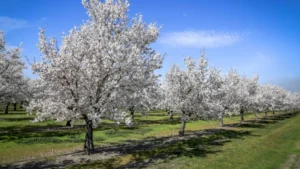









Hello, I've always been fascinated with mushrooms and especially now that I've found out that My Brother has been diagnosed with liver cancer I'm determined to help Him with mushrooms preferably lions mane.
Richard
December 2, 2024 11:27 pmYou can watch Fantastic Fungi or visit Paul Stamets' website at fungi.com for more information and research.
Benjamin Brooks
December 3, 2024 12:41 am